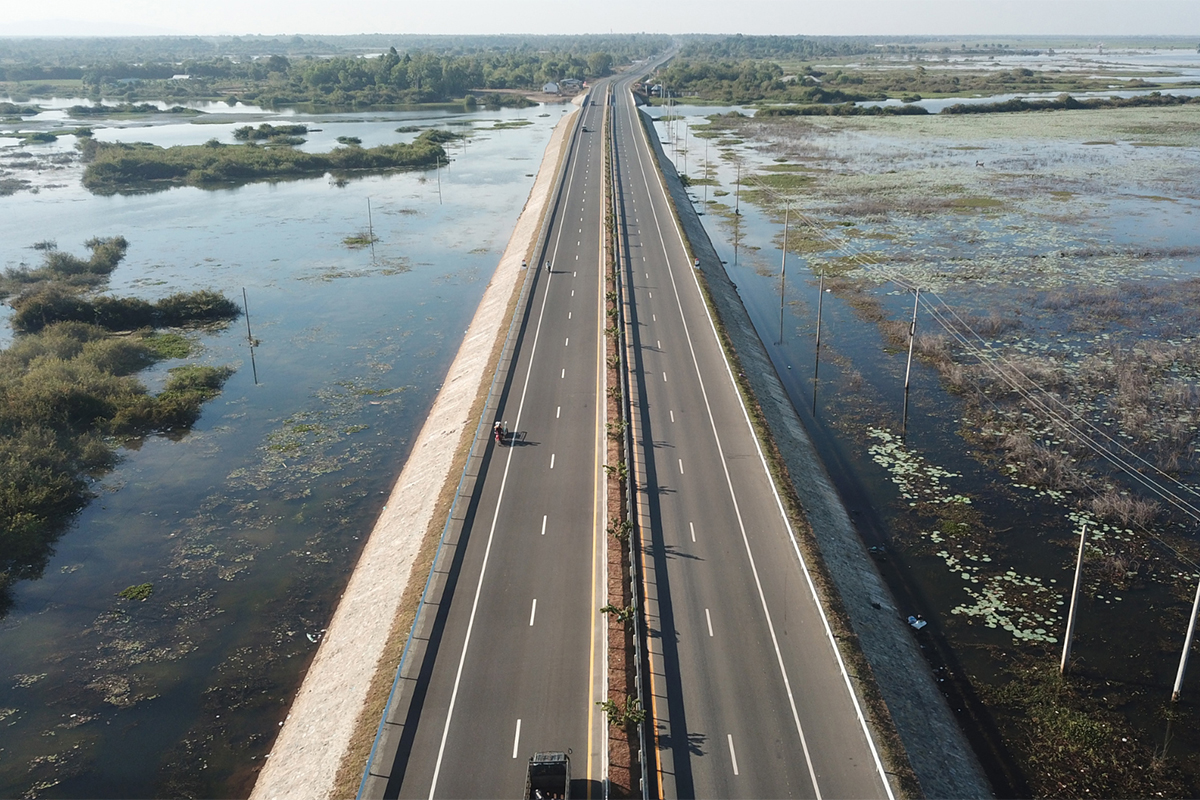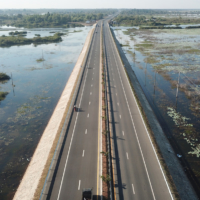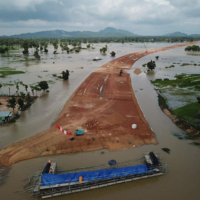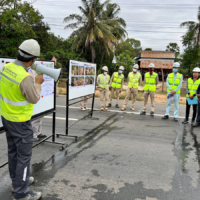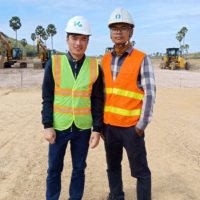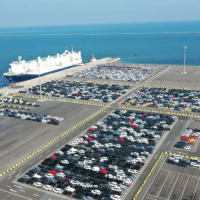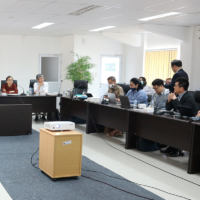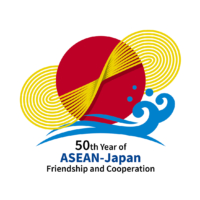Japan and ASEAN are celebrating the 50th Year of ASEAN-Japan Friendship and Cooperation. Over the past half century, Japan has built strong partnerships with each of the ASEAN countries, as well as with ASEAN as a whole. To conclude this commemorative year, Japan is hosting ASEAN leaders at a commemorative summit in Tokyo on Dec. 17.
Free and open Indo-Pacific
Earlier this year in New Delhi, Prime Minister Fumio Kishida announced the Japanese government’s plan to continue to pursue its Free and Open Indo-Pacific initiative. According to his policy speech, the fundamental concept of FOIP is to “enhance the connectivity of the Indo-Pacific region, foster the region into a place that values freedom, the rule of law, free from force or coercion, and make it prosperous.”
He also stated that FOIP “is becoming more important than ever toward the goal of leading the international community in the direction of cooperation rather than division and confrontation.” The Indo-Pacific region, with more than half of the global population, is having increasing importance and impact over the rest of the world.
Against this backdrop, FOIP’s visionary and holistic concept is gaining growing endorsement not only among the countries in the region, but also from the international community. Diverse efforts have been made and cooperation sought for the realization of FOIP in various parts of the world, based on the common understanding that the dynamism of the Indo-Pacific region is a driver of the global economy and that order based on the rule of law in the region needs to be reinforced.
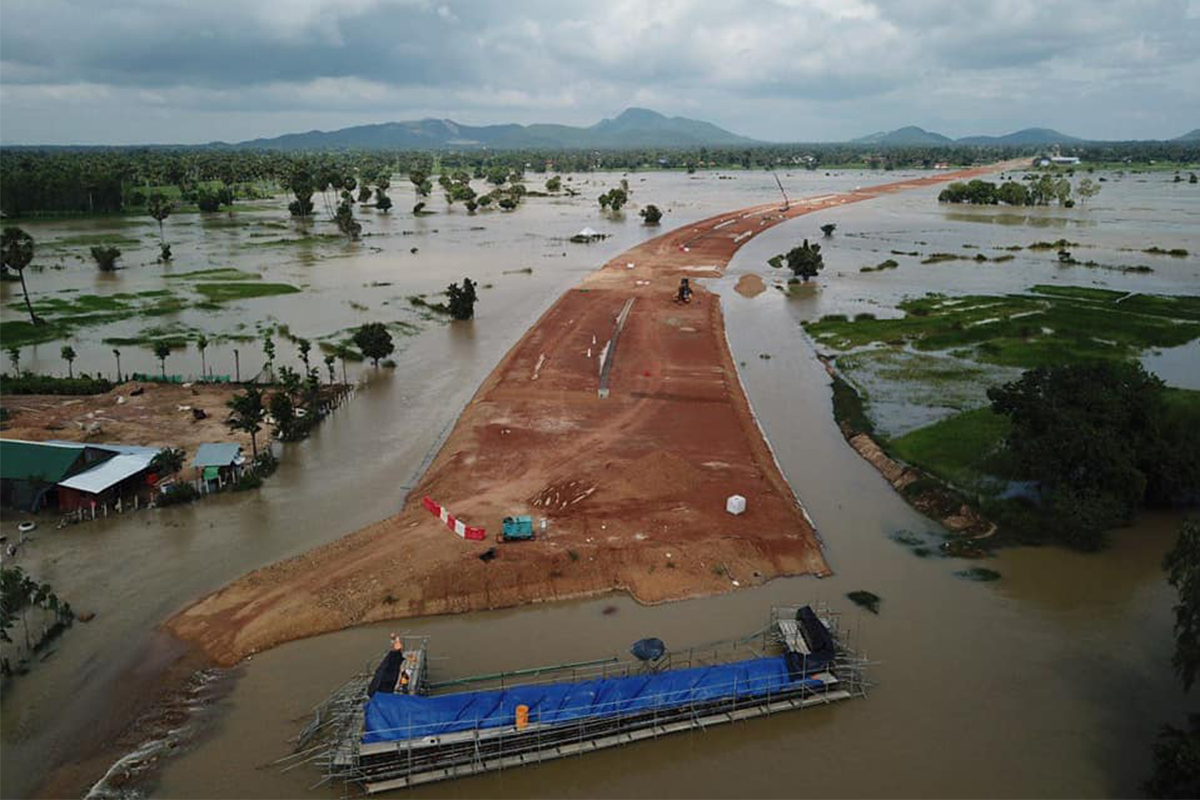
FOIP’s foundations
Four pillars have been set forth to realize the concept of FOIP. The first is Principles for Peace and Rules for Prosperity, which aims to ensure the recognition of fundamental principles of peace and peace-building, create a free, fair and just economic order while keeping up with the changing of the times, and promote rule-making to prevent opaque and unfair practices.
The second pillar is Addressing Challenges in an Indo-Pacific Way, a concept that will focus on the protection of common global issues, such as climate, the environment, cyberspace, global health, food and energy and the enhancement of the resilience and sustainability of societies.
The third is Multilayered Connectivity, which aims to improve connectivity among the Indo-Pacific countries from various aspects to support the collective growth of the entire region and build stronger relationships with countries outside it.
The final pillar is Extending Efforts for Security and Safe Use of the Sea to the Air, based on enhancing the security and safety of these two public domains.
Of all the pillars, Multilayered Connectivity is considered the core element of cooperation for FOIP, and there are various initiatives to achieve connectivity. One example is the Japan-ASEAN Comprehensive Connectivity Initiative, which is aimed at further facilitating the integration of the ASEAN community — something Japan has long contributed to. The initiative consists of projects focusing on transport infrastructure development, enhancement of digital connectivity, maritime cooperation, improvement of supply chain resilience and electrical connectivity, as well as human and knowledge connectivity.
Improving road transport
The transport infrastructure development projects are designed to provide better connectivity both within each country and among neighboring countries in the region and with the rest of the world by creating land, sea and air corridors. This includes technical cooperation as well as promotion of institutional and people-to-people connectivity.
One of the projects under the initiative is the National Road No. 5 Improvement Project in Cambodia. NR 5 is part of what is called the Southern Economic Corridor that stretches between Ho Chi Minh in Vietnam and Dawei in Myanmar. The project, which started a decade ago to cover a distance of 366 kilometers between Prek Kdam near Phnom Penh in the southern-central part of the country and Poipet near the border with Thailand, is intended to contribute to the economic development of Cambodia and the Mekong River basin. Through the project, NR 5 has been widened and improved with new bypasses intended to raise efficiency for the rapidly growing logistics sector.
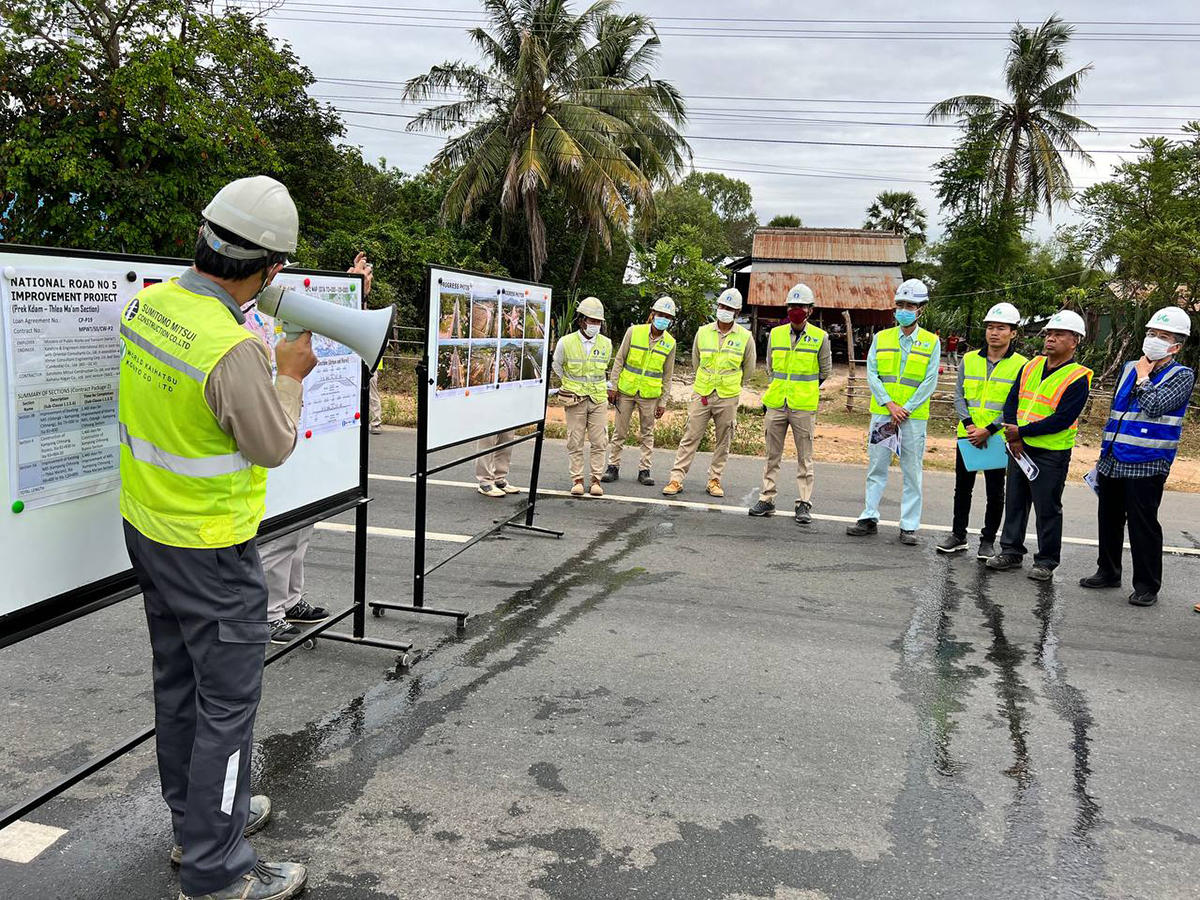
Munineath Sor, a civil engineer at Katahira Engineers International who was involved in the project from an early stage and is now working on the completion report, explained how the road has changed.
“It was mostly a dirt road 30 years ago. Some of it had been paved or repaired over the years, but the poor quality made it vulnerable to heavy vehicles and repeated floods. Cars, trucks, motorcycles, bicycles and tractors all drove in the same lane, causing frequent accidents,” he said.
Sor said the project has brought a number of benefits to both the community and local industry.
“Before the project started, it could take one to two days to travel from the border with Thailand to Phnom Penh, but now that you can drive at 90 kph in some sections, the travel is shortened to only one day or less,” he said.
In addition to making travel safer, easier and faster for residents and businesses via additional lanes, bypasses and high-quality paving, new road signs are helping tourists get to their destinations. Thanks to the increased convenience, people started to build houses on what used to be rice fields and farms, lifting land values. This has led to new shops and businesses being launched along the road, invigorating the economy wherever it goes.
There are also many benefits that are less visible, Sor explained.
“Transportation costs went down thanks to the shortened travel time and less need for car maintenance. The trees and bushes planted along parts of the road and the bypasses mitigate noise and pollution. The project used local people, which helped them acquire new skills.
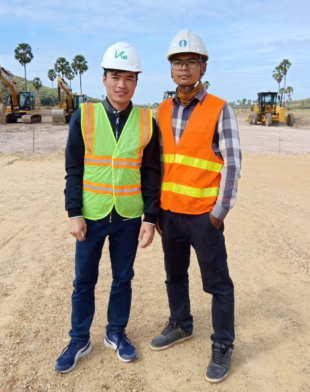
“I personally gained a lot from the project, which I joined when I was fresh out of college. Although I had majored in civil engineering at university, the project made me realize that what you learn at school is one thing, and what you are expected to do on a real construction project is quite another,” Sor said.
There were things that he learned especially by working under Japan’s initiative.
“In addition to the advanced infrastructure technology, the noise, dust and air and water quality were constantly monitored during construction, and there were rules about waste disposal, which is why I believe in the quality of Japan’s infrastructure,” he said. “I did learn about environmental measures to be taken in construction sites in general at university, but the project was a perfect example of how such knowledge should be put into practice.”
He also said working in a diverse environment was a valuable experience.
“Throughout the project, I worked with many people older than me who taught me new things, as well as with project members from other countries including Japan, Vietnam and the Philippines. This experience made me realize that people with different cultures and backgrounds can work together as one,” he said.
Besides the quality of the road itself, safety awareness plays an important role in reducing traffic accidents and maintaining convenience and efficiency in traffic and logistics. Japan has also launched its Project for Improvement of Road Traffic Safety on Trunk Roads, which is intended to plan, execute and assess traffic safety measures and share know-how related to accident prevention and investigation.
Port upgrades
The Japan-ASEAN Comprehensive Connectivity Initiative also includes maritime cooperation, such as port improvement projects. A series of development projects for Sihanoukville Port, the only international deep sea port in Cambodia, has supported the country’s economic growth, especially in logistics and trade.
Japan is also helping Indonesia develop Patimban Port, a new international port including container and car terminals in the eastern part of the Jakarta metropolitan area. It is intended to solve the capacity issues by meeting increased cargo demand and reducing excessive traffic congestion in the capital. The first part of the project, financed by a ¥118.9 billion loan from the Japanese government, is complete and the car terminal has been run by Japanese companies since December 2021. The second part, which is intended to expand the port area, is ongoing and financed by a ¥70.2 billion loan also from Japan.
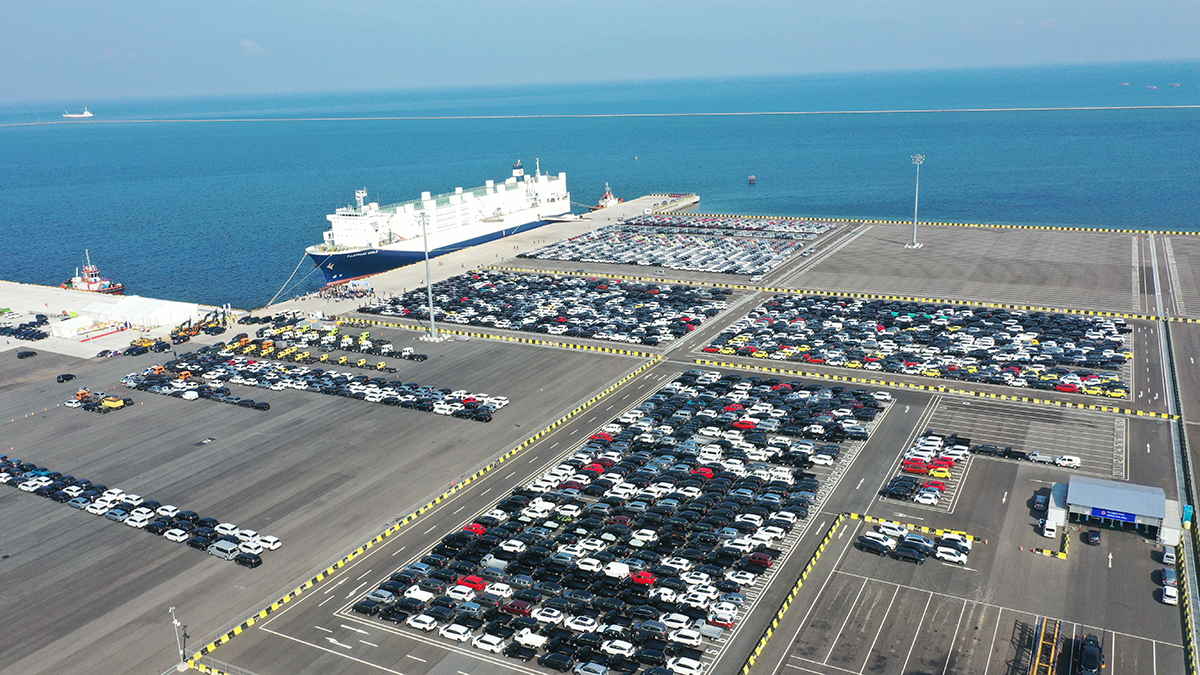
Dian Wahdiana, head of the Class II Port Authority Office of Patimban, is coordinating all stakeholders while managing the port operations. Wahdiana said the new port will also strengthen economic resilience and contribute to the green transformation of transportation by bringing production centers closer to the port, resulting in fuel savings and the use of renewable energy to maintain port operations.
The port authority has been involved since the earliest phases of construction, and Wahdiana has witnessed some challenges during the process.
“Patimban, on the north coast of Java, is known for its shallow water and required dredging to allow large vessels to enter. It required soil improvement to use as a backup area for the port and related businesses,” he said.
He said the people of West Java and the residents of Subang Regency in particular, have welcomed the development of Patimban Port with the hope that it can increase the potential for developing community competence. “Six villages around the port, for example, have seen an increase in trading activities and residential tenancy corresponding to the increase of workers involved in the project,” he said.
Local participation has also been encouraged. “The project upholds the manpower optimization target of achieving the engagement of the local labor force to account for a minimum of 30% of the total,” Wahdiana said.
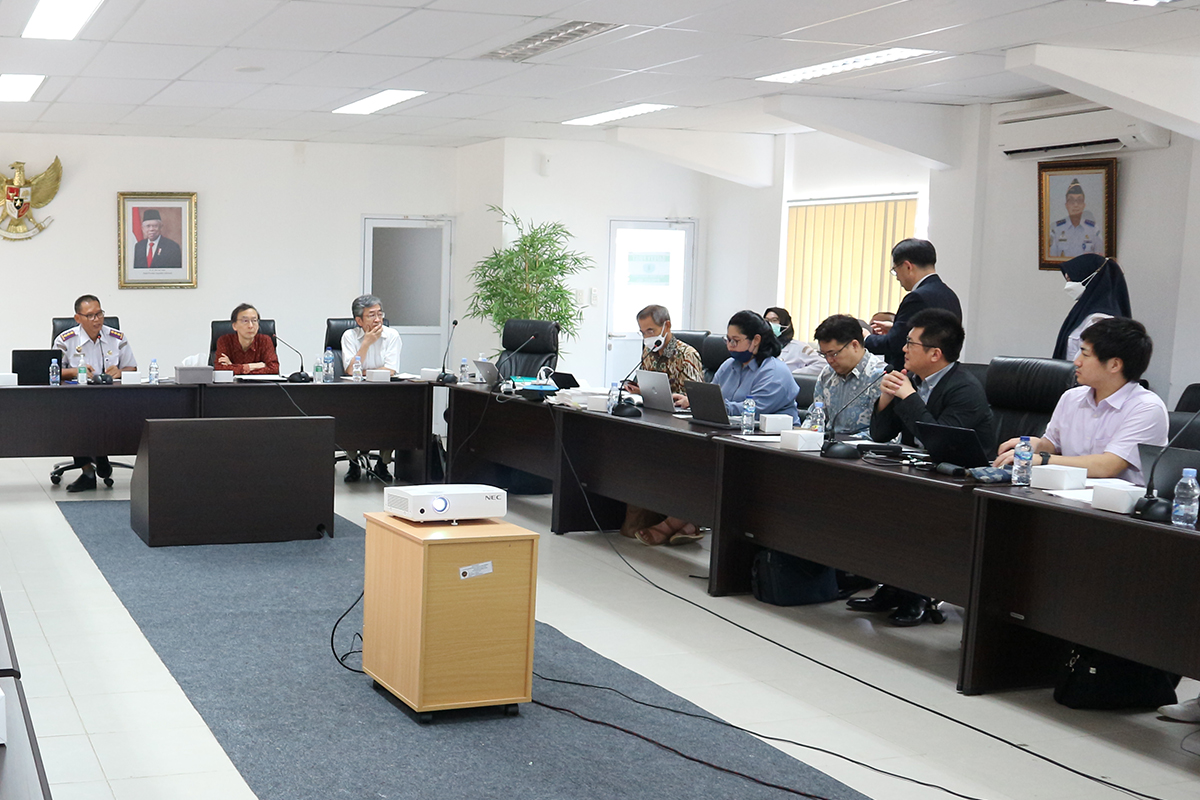
The value of people
As seen in both of these projects and all other activities carried out under FOIP, human resource development has always been the key element in Japan’s support to the region. Japan plans to provide capacity-building projects that span areas ranging from transport infrastructure, electrical and digital connectivity and maritime cooperation to human and knowledge connectivity for 5,000 individuals over the next three years under the Japan-ASEAN Comprehensive Connectivity Initiative.
Various projects worth ¥2.8 trillion are being implemented in transport infrastructure development alone. Japan’s capability to build quality infrastructure, which is a must in providing a powerful foundation for continuing economic growth, can be maximized by forming a strong partnership with the recipients of its support.
There are also diverse ongoing projects that will facilitate the mutual development of ASEAN and Japan as equal partners based on trust. These multilayered collaborations will not only bring peace, prosperity and sustainability to the region, but also pave the way to achieve the FOIP that the global community aspires to.
This page is sponsored by the government of Japan.
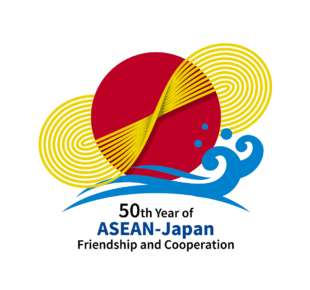
Download the PDFs of this ASEAN-Japan 50th anniversary Special



